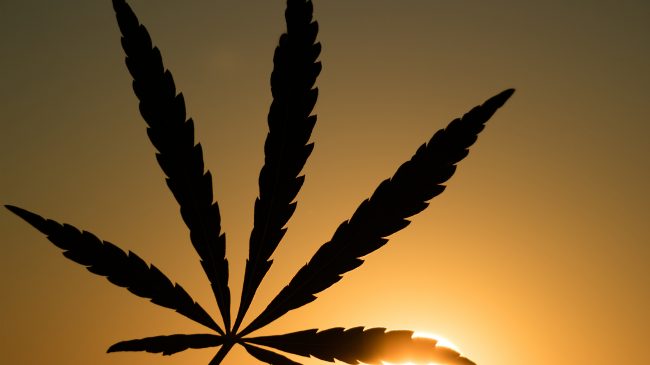Background
From the full brief — Cannabis and States’ Power: A Historical Review Of State Efforts And Authority To Regulate Cannabis
Over the past century, state and federal agencies have developed a myriad of policy approaches for regulating the cultivation, production, and sale of cannabis and cannabis-based products. Although many Americans living today have grown up in a policy environment of strict federal prohibition and have been socialized to accept that approach as the cultural norm, cannabis has been a significant agricultural product within the United States for much of its history.
Historically, Americans have farmed cannabis for several purposes. Most early interest in cannabis was for its stalks and fibers which were the primary material from which early American textiles were produced, as well as cordage and paper. Secondly, cannabis seeds and seed oil were also a historical feedstock for both humans and animals. Third, the flowers and leaves of the cannabis plant produce unique chemical compounds called the “cannabinoids” that can exert medical and psychoactive effects on humans. While scientists have identified more than 100 cannabinoids, the most famous is delta-9 tetrahydrocannabinol (THC), which produces a temporary psychoactive effect when consumed. Not all strains of cannabis produce significant amounts of THC, but among those that do, the dried leaves, flowers, resins and fertile seeds of those plants are legally defined today as marijuana. The remaining portions of the plant, and, in the case of low-THC strains of cannabis, the whole plant, are commonly classified as industrial hemp.
Cannabis farming played a central role in the founding of the American republic. In fact, it was a primary motive for British colonization of the original American colonies. Sailcloth and cordage made from cannabis fibers were essential for maintaining the British fleet, and the island nation had limited land on which to grow the necessary supplies of both food and cannabis. King James ordered every property owner at Jamestown to grow a minimum of 100 cannabis plants for export to England. Throughout the 17th and 18th centuries, these quotas were expanded and the American colonies were restricted from trading cannabis with other nations so that any cannabis not consumed domestically would be shipped back to England. England’s demand for cannabis fiber was so great that the Crown began to offer free transportation to America, free land and free seeds to induce additional migration to the colonies for cannabis cultivation. The Crown ultimately offered to purchase one pound of colonial cannabis fiber for as much as two pounds of tobacco—a new cash crop that unexpectedly flourished in the colonies.
Given the centrality of cannabis in the settling of the American colonies, it is little surprise that many of the American founders, including George Washington, Thomas Jefferson and Benjamin Franklin, were cannabis farmers or processors. Further, their writings indicate that Washington, Jefferson and other major figures in American history not only harvested cannabis for its fibers but also enjoyed smoking or cooking with the flowering parts of the plant. The original drafts of the American Declaration of Independence were likely written on paper made from cannabis fibers, and Betsy Ross stitched the first American flag out of cannabis-based fabric. Although the demand for cannabis fiber declined following the Civil War, the first Federal Reserve notes were still printed on paper made from cannabis fibers, and the original ten-dollar bill displayed a drawing of American farmers harvesting cannabis.
By the early 20th century, however, many countries in the West grew increasingly alarmed at the potentiality for cannabis to be consumed for its inebriating effects.5 Following World War II, these concerns culminated in the passage of a series of federal legislation that made it either difficult or illegal to produce cannabis in any form, including for purely industrial purposes.
Prior to and throughout the century-long debate on the federal treatment of the cannabis plant, however, individual states have developed a wide range of policy alternatives to regulate its production, sales, and use. Although many states very recently have taken widely publicized actions to regulate cannabis within their own borders, states have been developing unique policy regimes to accomplish that same task dating back to the late 19th century.
This paper makes three facts particularly clear. First, cannabis played a central role in the forming of the American republic. Second, states have historically taken the lead in regulating the market for cannabis products that contain the psychoactive cannabinoid THC within their own borders. Third, federal action to outlaw marijuana was unfounded on the science, was used as justification for growth of the federal bureaucracy, and has created tense friction with state governments regarding the federal allocation of powers under the U.S. Constitution.
There is no evidence that states intend to relinquish to federal agencies the power to regulate marijuana within their borders. To the contrary, a growing number of states are passing laws to legalize marijuana for either medical or recreational purposes as a direct affront to federal assertions of power under the Filburn interpretation of the Interstate Commerce Clause. Although early versions of these laws were almost exclusively passed by voter initiative, state lawmakers have increasingly considered legalization statutes through the legislative process. In 2018, Vermont became the first state to legalize marijuana for recreational use by a legislative act, indicating antipathy from even state policymakers toward the federal assertion of power in this area.
Predicting the future is difficult, and no one knows how this conflict will ultimately be resolved. Congress may elect to end the federal prohibition of marijuana at any point, such as through a reclassification under the Controlled Substances Act or another means. It has recently taken similar action with regard to low-THC strains of cannabis, or hemp, which is now protected from prosecution under the Controlled Substances Act when grown under a license issued by the U.S. Department of Agriculture pursuant to provisions of the 2018 Agriculture Act. Alternatively, Congress might restore the traditional interpretation of the Interstate Commerce Clause by reserving to the states the undisputed power to regulate marijuana within their borders.
On the other end of the spectrum, Congress may elect to crack down more forcefully on state marijuana programs and the businesses they license. One thing is for certain though: The status quo, given all the staunchly competing interests, is untenable.

